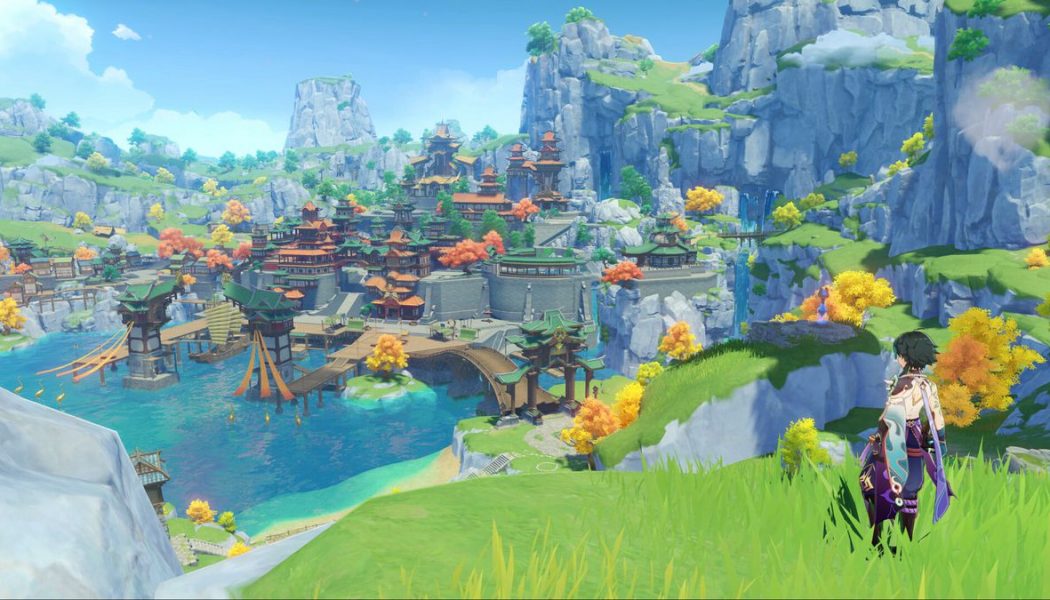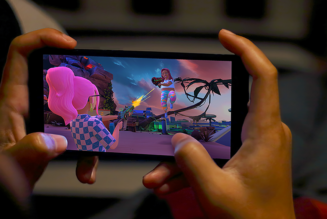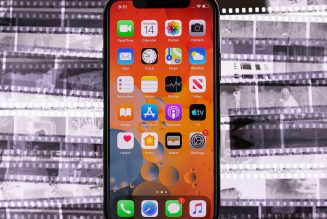2020 has been a bad year in almost every way. I don’t need to list the reasons. But one of the few bright spots has been the world of video games. From Animal Crossing helping folks stay connected during the pandemic’s early days to Travis Scott performing a virtual concert in Fortnite to politicians streaming Among Us on Twitch, games seem to be everywhere. They’re embedded in just about every aspect of our culture. Not all of this is new, of course, but it’s been accelerated by the current state of the world, where virtual spaces are becoming as necessary as real ones.
In fact, you could say that now is the best possible time to pick up gaming as a hobby. From the sheer breadth of experiences that are available to the simple fact that more people are playing than ever before, video games have never been so accessible and so broad. And with new consoles on the way from both Sony and Microsoft, the medium is looking to change and expand even more very soon.
Here are 10 reasons why gaming is better than ever.
You don’t have to spend a cent to play great games
I always thought I had it good growing up. In the ‘90s, my parents’ PC let me play huge chunks of games like Commander Keen, Jill of the Jungle, Scorched Earth, Castle of the Winds, Raptor: Call of the Shadows, and EGA Trek without paying a cent, and I watched a free mod for Half-Life become one of the most popular games in the world. But the shareware and modding scene I remember has nothing on the cornucopia bestowed on gamers today.
This is the year the biggest Call of Duty ever made is a free battle royale game. Fortnite, Valorant, Apex Legends, Spellbreak, and PUBG Mobile are all titans of multiplayer that you don’t have to pay for. MOBAs are the same; League of Legends, Dota 2, Smite, and Heroes of the Storm don’t make you buy in. Hearthstone, Gwent, Legends of Runeterra, and MTG: Arena let you sling cards for free, while Warframe and Dauntless scratch that sword-swinging itch. And Pokémon Go is still one of the biggest games in the world.
:no_upscale()/cdn.vox-cdn.com/uploads/chorus_asset/file/21991906/50272117098_4902e671b7_k.jpg)
It’s not just made-for-microtransaction games that forgo the initial spend: huge games just past their prime are now going free as well. Destiny 2 is free. Rocket League is now free. StarCraft II and Counter-Strike: Global Offensive went free a few years ago. Increasingly, large chunks of MMOs like Final Fantasy XIV, EVE Online, and Star Wars: The Old Republic are free-to-play, too.
But my favorite free games are the full-fat titles that Epic, Ubisoft, and other PC platforms are handing out like candy with no strings attached. I own full copies of Assassin’s Creed Odyssey, The Division, and Watch Dogs 2 simply because I played a Google demo or watched a Ubisoft stream. Meanwhile, Epic is using its Fortnite fortunes to give a mountain of PC games away. We haven’t even counted all of the free weekends and weeks where you can download and try an entire game on Steam or Uplay or the Steam Festivals that come with hundreds of free indie game demos. If your internet and home network is strong, Nvidia’s GeForce Now will give you a free virtual PC for an hour at a time that you can play free games on. It’s the ultimate cheapskate move.
And recently, a couple of truly epic cross-platform games have been free right out of the gate: the smash-hit social murder guessing game Among Us is free with ads on mobile, and the gorgeous anime fantasy adventure Genshin Impact seems to have largely been forgiven for cloning portions of Breath of the Wild, thanks to a richly detailed world… which, again, you can explore on phones or PCs free of charge.
At this rate, you could stop paying for games tomorrow and never run out of things to play. — Sean Hollister
Subscription services are turning gaming into Netflix
Game subscription services like Microsoft’s Xbox Game Pass and Sony’s PlayStation Plus Collection have made it a lot easier for me to justify the costs of a next-gen console. Instead of having to buy a console and a $70 game (or two or three) just to have something to play on day one, I can plug the consoles in, log into my $9.99-per-month Game Pass and PlayStation Plus accounts, and pick something to play from the wealth of fantastic options available on each service.
For me, the monthly cost for those services is a much more economical way to play games. I love being able to try something that interests me without having to worry about paying full price and regretting it later. And I don’t usually play games more than once, so eventually losing access to a game if or when I stop subscribing isn’t that big of a deal to me.
And the services have so many games to play. The PlayStation Plus Collection for the PlayStation 5 has 18 of the PS4’s best games. PlayStation Now has more than 800 PS4, PS3, and PS2 games you can play on your PS4 and PC. Xbox Game Pass has more than 100 titles and will get all future Microsoft first-party titles on release day (a deal that’s all the sweeter with Microsoft’s recent acquisition of Bethesda Softworks’ parent company). And EA, Ubisoft, and Apple all have their own game subscription services, each packed with games.
If you don’t have a console? Apple Arcade is a similar service, offering a buffet of premium mobile games — some of which are exclusive — for $4.99 per month. After more than a year of existence, Arcade now boasts some truly great experiences.
Paying for one month of any of those subscription services gives me access to more games than I could ever reasonably expect to finish in a timely manner. They’re finally starting to live up to their potential of being something like Netflix for gaming. And their single-month subscription costs are a heck of a lot cheaper than $70. — Jay Peters
VR is steadily finding its place
Virtual reality is not the mainstream format that the hype around the Oculus Rift, HTC Vive, and PlayStation VR might have led you to expect all the way back in 2016. There are still huge barriers for a lot of people to overcome before they’ll want to commit. The technology is still expensive, you still have to wear a bulky headset, and in many cases, there are still fundamental game design issues to be worked out.
But if you take a step back for a second and look at how the technology has evolved alongside the video game industry, VR is in an incredible spot right now. There are multiple commercial products that you can actually buy and have some seriously amazing experiences with. With my apologies to the developers of Mario’s Tennis for the Nintendo Virtual Boy, that’s never been the case before.
:no_upscale()/cdn.vox-cdn.com/uploads/chorus_asset/file/19825970/COMBINE_ELEVATOR_4K.jpg)
Sony generally did a good job with PlayStation VR, turning in a simple-but-effective product and supporting it with a solid flow of content. Valve’s SteamVR push resulted in the high-end Index headset and the fantastic Half-Life: Alyx. And Facebook’s Oculus Quest, particularly the new second model, has struck by far the best balance of technology and accessibility to date.
There are certainly questions remaining over where the VR industry will go in the future, not least regarding Facebook’s stewardship of the Oculus ecosystem. You may well have entirely valid reasons for not wanting to get on board with VR yet, or even ever. It’s not for everyone.
But as I carry out a bombing run on a Star Destroyer in Star Wars: Squadrons or run through Rez Infinite for the 300th time or eke out my highest score yet on a Linkin Park song in Beat Saber while really hoping that no one’s watching, it’s hard not to feel like VR is an essential part of the gaming landscape today. It might not be the future of everything, but it’s uniquely exhilarating in ways that would otherwise be impossible. — Sam Byford
The biggest games are more than just games
On a typical Saturday, I might get up early to catch a few League of Legends Pro League matches broadcast from Shanghai and maybe squeeze in a few rounds of the collectible card game Legends of Runeterra as I watch. Later in the day, I’ll listen to the latest single from K/DA or catch up on League’s lore-heavy short stories. Before I know it, hours have passed. The wildest part is I don’t actually play League of Legends — but there are so many other ways to interact with its vast universe.
This is increasingly becoming the case for the world’s biggest games. Titles like League, Fortnite, Minecraft, or Overwatch are much more than just games. They’re short films and TV shows, comic books and novels, sports and live-streaming entertainment. The actual game is just one part of the overall experience. This means that for the most hardcore fans, you can really dig deep and become invested in your favorite games. You can play Overwatch and watch the Overwatch League and read Tracer comic books, and it all ties together. You can spend the hours you aren’t playing Fortnite watching your favorite streamer play it on Twitch.
But it also means that there are more entry points for people. I may not enjoy playing League all that much, but it’s fun to watch high-level competition, and I’ve become increasingly enamored with its vast lore. Turns out, I don’t need to play it at all to explore all of that. Even an extremely nerdy strategy game turns into something very accessible when it’s part of a vast entertainment universe. — Andrew Webster
The dream of cloud gaming is so close
Cloud gaming, in which you stream games from a faraway server to whatever screen you have in front of you, is poised to change pretty much everything about the game industry. That’s if, like viral reality, the technology can find its footing when it becomes more than just betas and hype. And the companies trying to make cloud gaming a reality have some very tricky technical and economic issues to iron out before we get there.
Most important right now is that no one company quite knows the best way to sell cloud gaming. There are now numerous competing models for how games will be priced and distributed in a future where consumers don’t own them but rent them from the cloud instead.
Microsoft has the strongest idea yet with Xbox Game Pass and xCloud bundled together, giving subscribers an ever-growing library of titles to stream but only to Android devices for now. Also holding up xCloud’s wider adoption is Apple, which won’t let cloud gaming services like Microsoft’s on the iOS platform. Then there’s Google Stadia, Amazon’s Luna, Sony’s existing PlayStation Now service, and Nvidia GeForce Now, among other smaller services from lesser-known companies. Even Facebook is taking small steps into the field. And each has its own particular approach, with no platform offering a true holy grail “Netflix for games” quite yet.
But the promise is exciting — and that’s why so many companies want a piece.
:no_upscale()/cdn.vox-cdn.com/uploads/chorus_asset/file/21950537/vpavic_xcloud_20201009_0011_Edit.jpg)
Imagine a world where you can start a game on your game console, pick it up later on your more powerful PC, and then have your save file carry over to your iPad or Android phone when you’re on the go. Even more radical is a world where very few gamers own any hardware at all, choosing instead to stream almost everything like we do with television today through whatever screen we have handy.
The kinds of experiences perfect for that screen-agnostic reality don’t really exist right now. But games like Fortnite and services like Xbox Game Pass are giving us a glimpse of what it’s like when hardware fades into the background and it’s just the games and the software that manages them in the cloud that matter. And it’s genuinely exciting, even if it feels like we’re still a few years away from seeing the first real benefits these cloud platforms can provide. — Nick Statt
Crossplay and cross-platform experiences make things more accessible than ever
Just a few years ago, the idea of getting to play cross-platform games with people on other consoles seemed like a pipe dream. But if 2019 was the year that proved that crossplay between different platforms was possible, 2020 saw it fully enter the mainstream as the new norm for multiplayer games going forward.
Games like Star Wars: Squadrons launched with full-fledged cross-platform multiplayer on day one; Apex Legends is adding crossplay soon, No Man’s Sky added support over the summer, and Bungie is already working on true cross-platform play for Destiny 2, too.
And of course, there’s Fortnite, which is still the gold standard for cross-platform experiences. Fortnite on PC is the same as Fortnite on Xbox or PlayStation as it is on your Android device. (Sadly, iOS no longer fits into this paradigm.) All of your progress, unlockable items, and new content syncs across all those versions of the game, and players can play with friends on any platform at any time.
That’s no small thing, either. It’s great for players: it lets you play your favorite games with your friends, even if one member of your group bought an Xbox instead of a PS4. With the increasing emphasis on long-term live games that can see players invest dozens, if not hundreds, of hours into a single title, it means that player progression isn’t tied into just a single platform.
Crossplay is great for games, too. It means that multiplayer lobbies are fuller, with bigger, healthier communities that can sustain games for far longer than the siloed-off player bases of the past. And with next-generation consoles on the way, things are looking even brighter, with some games promising not just cross-platform play between, say, Xbox and PlayStation, but cross-generational play, too.
Video games are better when everyone can play together. And now, with cross-platform play finally a reality, everyone can. — Chaim Gartenberg
Nintendo continues to go its own way
Nintendo’s role over the past couple of decades has often been as a foil to Sony and Microsoft — to provide something different rather than to compete directly. Sometimes that goes very well, as with the DS and the Wii, and sometimes it goes like the Wii U. But with the wildly successful Switch, it feels like Nintendo has found an approach that could set it apart for the next decade or more.
The core idea — it’s a regular game system, but it’s also a portable, and it works — is one anyone can get behind if they ever travel, or share a house with another TV viewer, or own a bed. The Switch is so compelling that people clamor for almost every game that could plausibly run on the device to do so. Nintendo’s own first-party output has been consistently strong on the Switch, with new entries in series like Super Smash Bros., The Legend of Zelda, and Animal Crossing rocketing through sales records.
:no_upscale()/cdn.vox-cdn.com/uploads/chorus_asset/file/10678467/jbareham_180418_2442_0093.jpg)
And by basing its latest home console around mobile technology that allows it to be used as a portable, Nintendo has a clear runway to improve the Switch. It’s easy to forget that it’s based around an Nvidia chip from 2015 and that there’s still room for clear, tangible gains without resorting to a $500 mega-box like the PlayStation 5 or the Xbox Series X. A more powerful version is rumored for next year, and while Nintendo is not known for pushing cutting-edge technology, the Switch concept is solid enough to warrant at least a few more upgrades.
As for the weird, experimental Nintendo that relied on quirky hardware? You still get that on the Switch with projects like the cardboard Labo sets, the workout RPG Ring Fit Adventure, and most recently, the AR-powered Mario Kart Home Circuit, all of which use external accessories to transform the device. The beauty of the Switch’s core simplicity is that it can be whatever Nintendo wants it to be. And if you want something more than that, well, soon enough, you’ll be able to step into theme parks of Nintendo’s own creation.
While the Wii and the DS were hugely successful, they were always going to be limited in terms of long-term appeal. That’s not the case with the Switch — it’s a slam-dunk product that will define Nintendo for the foreseeable future. And even at less than four years old, there’s a strong case to be made that it’s Nintendo’s best console yet. — Sam Byford
PC gaming is in a great spot
PCs are also setting the stage for the next generation of games, thanks to some new GPUs and CPUs. Nvidia unveiled its RTX 3000 Series of graphics cards recently, and the RTX 3080 is more than capable of delivering 4K games at high frame rates. We’ve seen a lot of big performance promises for the RTX 2000 Series of cards in the past, but it feels like Nvidia is finally delivering a jump that will help push PC gaming closer toward 1440p as the standard and 4K at the high end.
Nvidia isn’t alone in its PC gaming efforts, either. AMD revealed new Zen 3 processors recently that will help boost frame rates, and the company also launched its RX 6000 series of GPUs. AMD promises that its new Radeon RX 6800 XT will go head to head with Nvidia’s RTX 3080, and it’s priced $50 cheaper.
All of these leaps in performance mean many existing and midrange cards will certainly get cheaper, as retailers seek to offer discounts on PCs bundled with older cards. If you’re still stuck on a 1080p display and a GTX 1060 graphics card, it could be a great time to upgrade for a host of new games that are arriving in the next few weeks and well into 2021. — Tom Warren
Games have become de facto social spaces
Gaming has become much more mainstream over the last decade, and many of the biggest games have been cleverly disguised as social hubs that let you stay connected with your friends and family. It is beautiful to see people I knew when I was younger, who I would have never expected to play video games, jump into these experiences.
:no_upscale()/cdn.vox-cdn.com/uploads/chorus_asset/file/21991927/Switch_ACNH_OctUpdate_screenshot__1_.jpg)
Games like Animal Crossing: New Horizons have blown up and provided escapism during the pandemic. I log in on Facebook and see people I went to high school with buying a Nintendo Switch just to play this one game. They use it to build or strengthen friendships in various ways, like trying to conquer the stalk market. I’ve even made new friends, and we would build rapport and bond over our mutual interest in a particular video game. Experiences like Among Us and Fall Guys are simplistic yet entertaining, making them appeal to such a broad audience. They’re also games that are at their best when played with friends.
I have always been a firm believer that games are for everyone, regardless of the circumstances. Today, new games come out consistently that validate that belief. The difference is they’re more than just games — many of them have become de facto social hubs that help me stay connected with friends and even make some new ones. — Taylor Lyles
Twitch and YouTube have changed how we experience games
Games aren’t just games anymore. This has been happening for a while — the elevation of video games beyond the bounds of their platforms, I mean. There were always discussion boards and message boards where games could and did live. But now, as the walls of the internet have collapsed and their denizens have been loosed upon each other — like Tumblr users fleeing a porn ban move to Twitter, let’s say — games have become mass culture. (There was also Gamergate, which has replicated and situated itself in American political life.) Animal Crossing became a legitimate viral hit early this year, way back in the early days of the still-ongoing pandemic; last year, Untitled Goose Game spawned an avalanche of memes. I think it’s safe to say that games and pop culture are now synonymous.
Partially, that has to do with the influence of YouTube and Twitch, which have always been a natural home for video games. And they’ve expanded how we can think of them, too, from the video essayists who deconstruct the tropes and mechanics of your favorite games to the streamers who manage to entertain while showing off a game you’ve heard about but haven’t actually played. These new-ish creators have never been more popular or more influential. I find that development pretty useful: there are so many video games, and I’ve found that there is a gap between the games I want to watch and the games I like to play. Video helps bridge it.
When Sony launched the PlayStation 4 in November 2013, the designers made the fascinating decision to ditch the traditional “start” and “select” buttons on the console’s controller in favor of “options” and “share.” It’s the latter button that helped send streaming into the mainstream; suddenly, it didn’t take obscure technical knowledge to broadcast yourself playing the things you liked. Frictionless sharing is what made the world we’re living in. Facebook’s guiding principle is that connecting with people is de facto good, which is absolutely untrue. But the site took over the internet anyway and remade everything else in its image. Gaming, like everything else, has followed.
The next generation of consoles is on its way, and each will have robust sharing features built into its system architecture. They’ll be all-in-one machines and worlds, I think, we’ll never feel like we have to leave — perfect, scale replicas of the internet itself. — Bijan Stephen










